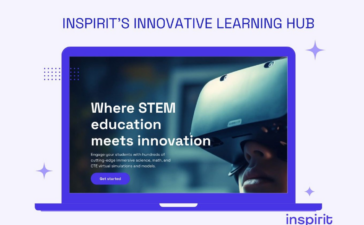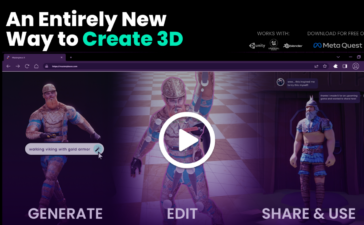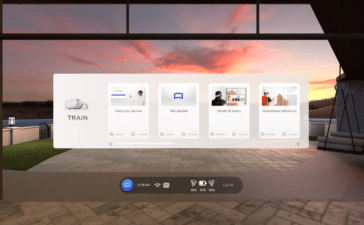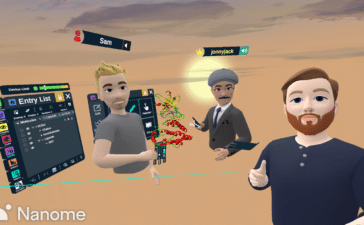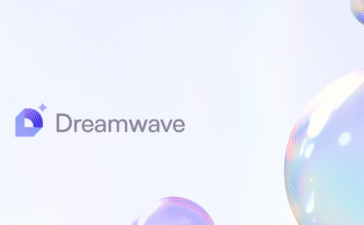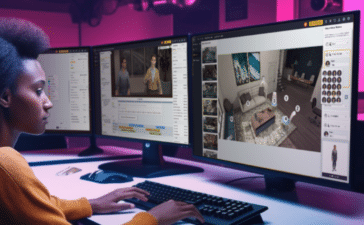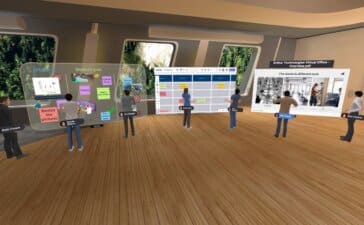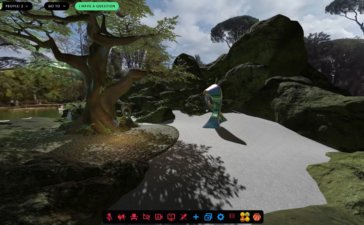Inspirit Launches Affordable XR STEM Education Platform for Middle and High School Students
XR STEM education has taken a leap forward with the official launch of Inspirit’s Innovative Learning Hub. The digital platform provides educators with affordable access to a premium library of virtual reality and augmented reality experiences designed specifically for middle and high school students. Focusing on enhancing learning outcomes and increasing engagement, Inspirit is revolutionizing the way STEM subjects are taught worldwide.
Breaking Down Barriers With Immersive Learning
Inspirit is a research-driven EdTech startup that pioneers immersive XR experiences for STEM education. The company’s Innovative Learning Hub stands as the premier choice for immersive XR STEM education, encompassing diverse subjects such as mathematics, physics, chemistry, biology, and vocational training.
Through XR experiences, Inspirit’s platform provides students with experiential learning opportunities. By engaging in simulations and exploring 3D models, students gain a deeper understanding of complex STEM concepts.
The advantages of VR education have long been embraced by both teachers and students, who have found immense value in its experiential approach. But with Inspirit’s XR expertise and easy-to-use technology, the platform bridges the gap between theoretical concepts and real-world applications, providing students with a deeper understanding and fostering engagement.
Renowned for its commitment to rigorous research, Inspirit collaborates with Stanford University researchers to unlock the full potential of XR learning. The result is a unified platform that seamlessly integrates into schools, improving learning outcomes and providing teachers with an intuitive system to embed into their curriculum.
Experts in the field, like Jeremy Bailenson, founding director of the Stanford Virtual Human Interaction Lab and professor of education, recognize the impact of Inspirit’s approach, emphasizing the importance of teacher professional development and curriculum alignment for successful integration and long-term usage in the classroom.

“Inspirit is unique in that it is led by a VR pioneer who puts ‘education first’, with a huge amount of experience in the world of STEM,” said Bailenson, in a press release shared with ARPost.
Unparalleled Access to Immersive XR Content
The Innovative Learning Hub boasts a comprehensive library of age-appropriate XR experiences that align with educational standards. From engaging simulations to interactive lessons, students have the opportunity to explore and study complex concepts, making learning tangible and enjoyable. This cutting-edge content ensures that students receive the highest-quality educational experiences.
Cross-Platform Compatibility for Seamless Learning
Flexibility is a key advantage of Inspirit’s Innovative Learning Hub. Students can access the library of XR content from various devices, including laptops, Chromebooks, and most VR headsets designed for educational use.

This compatibility maximizes schools’ existing hardware investments while expanding learning capabilities. By eliminating the need for costly subscriptions and one-off purchases, Inspirit promotes inclusivity and accessibility, allowing all students to benefit from a comprehensive STEM curriculum.
XR STEM Education: Inspiring Students and Shaping Futures
As a firm believer in the transformative power of immersive technology, Aditya Vishwanath, co-founder and CEO of Inspirit, actively champions its potential for revolutionizing XR STEM education.
The Innovative Learning Hub serves as a platform that grants middle and high school students the opportunity to engage with exceptional XR content. “Our research-based methodology ensures all middle and high school students have an opportunity to access top-notch XR content that enhances their learning experience, prepares them for the future, and inspires them to pursue their dreams,” said Vishwanath.
